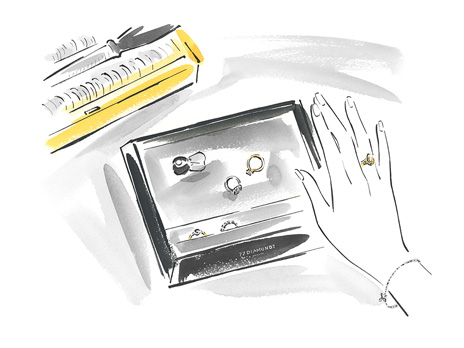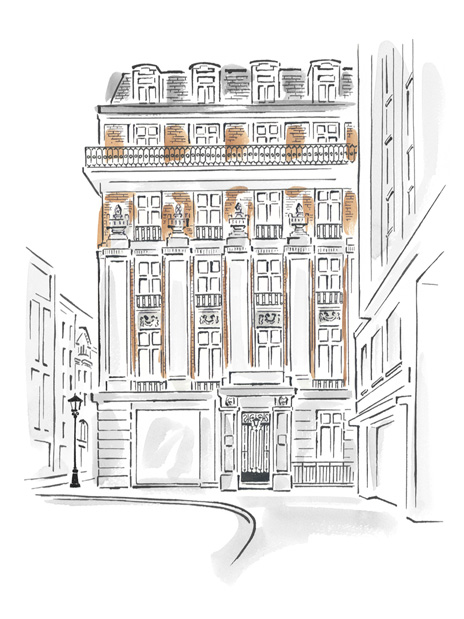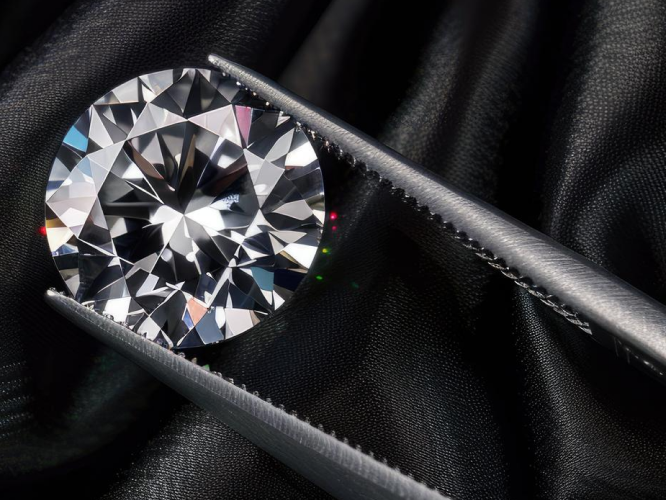What they Symbolise
Due to their extreme rarity, rubies are by far the most coveted coloured gemstones of all. Their vibrant red
colour has inspired countless stories and legends, spanning both centuries and cultures. In Sanskrit, rubies
are called ‘Ratnaraj’ , which translates to ‘king of precious gemstones.’
A symbol of passion, strength and power , rubies have long been associated with the
life-sustaining force of blood. In fact, Burmese soldiers were known to use rubies in battle for protection,
sometimes inserting the gems under their skin to achieve greater courage and fearlessness.
Today, the captivating red of these gemstones continues to fascinate many. Rubies are the July
birthstone and are given to celebrate 15th and 40th wedding anniversaries.
What to Remember
Cost and Carat
The final price of your ruby will be determined by many factors, including colour, carat, cut, clarity,
treatment and origin. The right combination of these will ensure your gem’s long-term value remains steady
and perhaps even increases over time.
Large rubies are extremely rare and in limited supply. For this reason, carat weight will make the price of
your gem increase exponentially. The price of a 10-carat ruby is usually 100 times that of
a one-carat stone.
Colour Intensity
Colour is the most significant factor when it comes to valuing a ruby. Unlike diamonds , there is no internationally accepted colour grading
system for this gemstone. 77 Diamonds have adopted the ICL’s seven levels of colour intensity, which range
from Dark to Medium Intense.
Rubies that are a shade above Medium Intense are called pink sapphires , as both these
gemstones are part of the same mineral variety, corundum.
The most sought-after colour in rubies is Vivid . Referred to as ‘pigeon blood’ in the trade,
this colour seems to have an almost fluorescent quality, lending intense fire to your jewellery. Our rubies
are classified in four different shades: pure, purplish, orangey and pinkish red . The
intense saturation of pure red rubies make them significantly more expensive. If your ruby has strong
orange, purple and pink overtones, this will affect long-term value.
Clarity
Unlike diamonds, inclusions in colorstones are common, well-accepted and often serve to indicate the origin
of the stone. There are three levels of clarity:
-
“Eye Clean” (EC1 - EC2) indicates that inclusions are invisible to the
unaided eye.
-
“Visible inclusions” (VI1 - VI2) indicates that inclusions are only slightly
visible to the unaided eye.
-
“Included” (I1 - I2) indicates that inclusions are obvious to the unaided
eye.
Cut and Shape
Usually, rubies are both brilliant and step cut. A brilliant cut ensures an even display of
light reflections throughout the gem, while a step cut lends intense fire to the piece. Some rubies may also
be cabochon cut, giving them a smooth and rounded finish. Keep in mind, the quality of the cut will
determine the overall price of your gemstone.
On the other hand, the shape of your ruby will not have a direct impact on price, as this is largely a matter
of personal preference. The most common shapes for rubies are round and oval , but you may
also find marquise or pear shaped stones.
Treatment
Rubies are most commonly enhanced through heat treatment. By applying heat to the gem,
experts have found that both colour and clarity are greatly intensified. The first examples of heat-treated
rubies date as far back as the Roman Empire. This is a widely accepted practice in the jewellery trade and
most methods have no harmful effect on the stone’s longevity.
At 77 diamonds, we provide two forms of ruby treatment: heated (H) and heated with flux
(Hf). These treatments are stable, permanent and do not require any special care. We do not sell
rubies treated with Beryllium or lead-glass, as these methods significantly weaken the gem.
Only the finest and rarest rubies are unearthed in a perfect state without any need for further
treatment, making them significantly more valuable.
Origin
Although some rubies may look similar, their prices will differ due to origin. The most expensive rubies come
from Myanmar (also known as Burma), where rubies have been mined for thousands of years. The
second finest origin is considered to be Mozambique and Thailand , followed closely by
Tanzania and Madagascar. Finally, rubies from areas such as Vietnam are
considered to be of lower value.





 Book an Appointment
Book an Appointment
 IN / INR
IN / INR
 my bag
my bag
 FAQs
FAQs
 visit our showroom
visit our showroom



